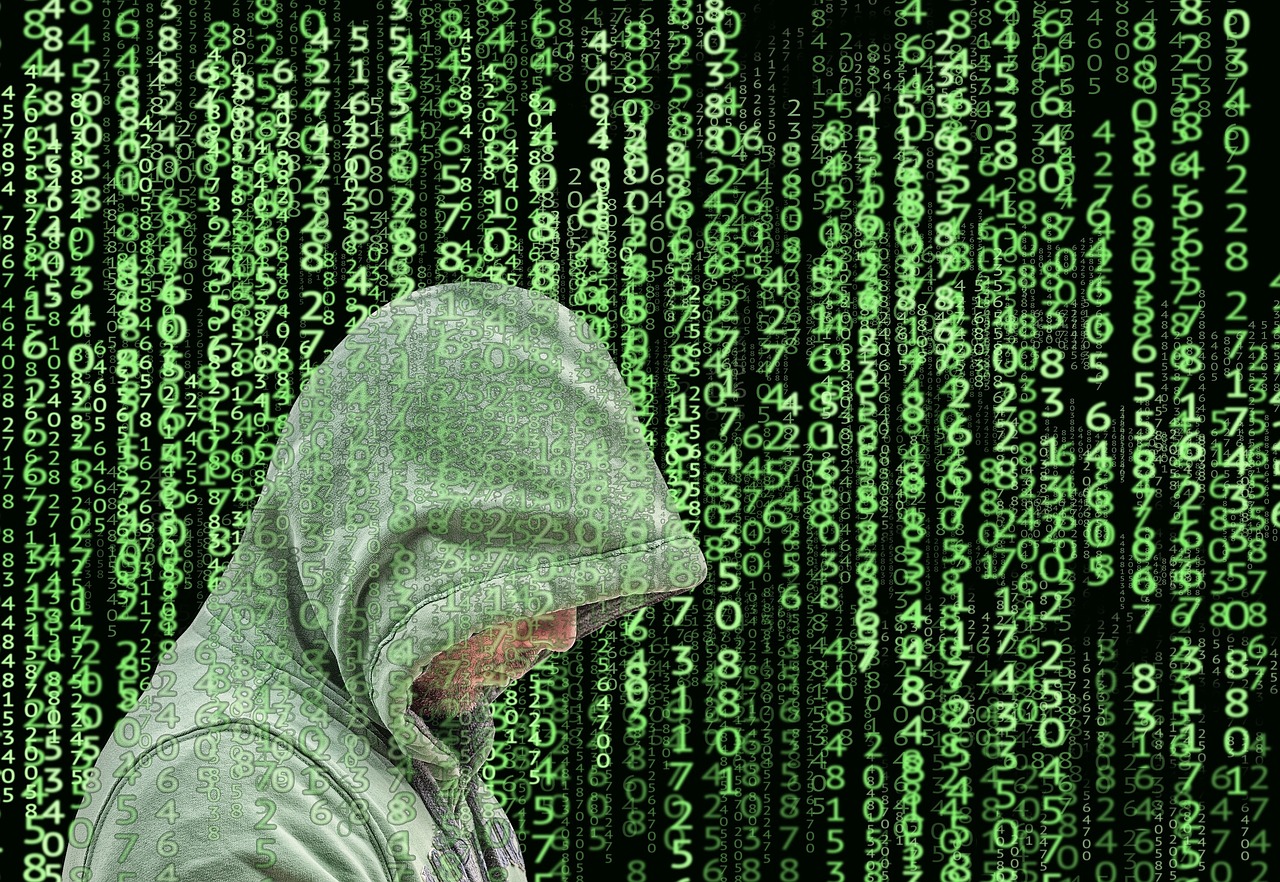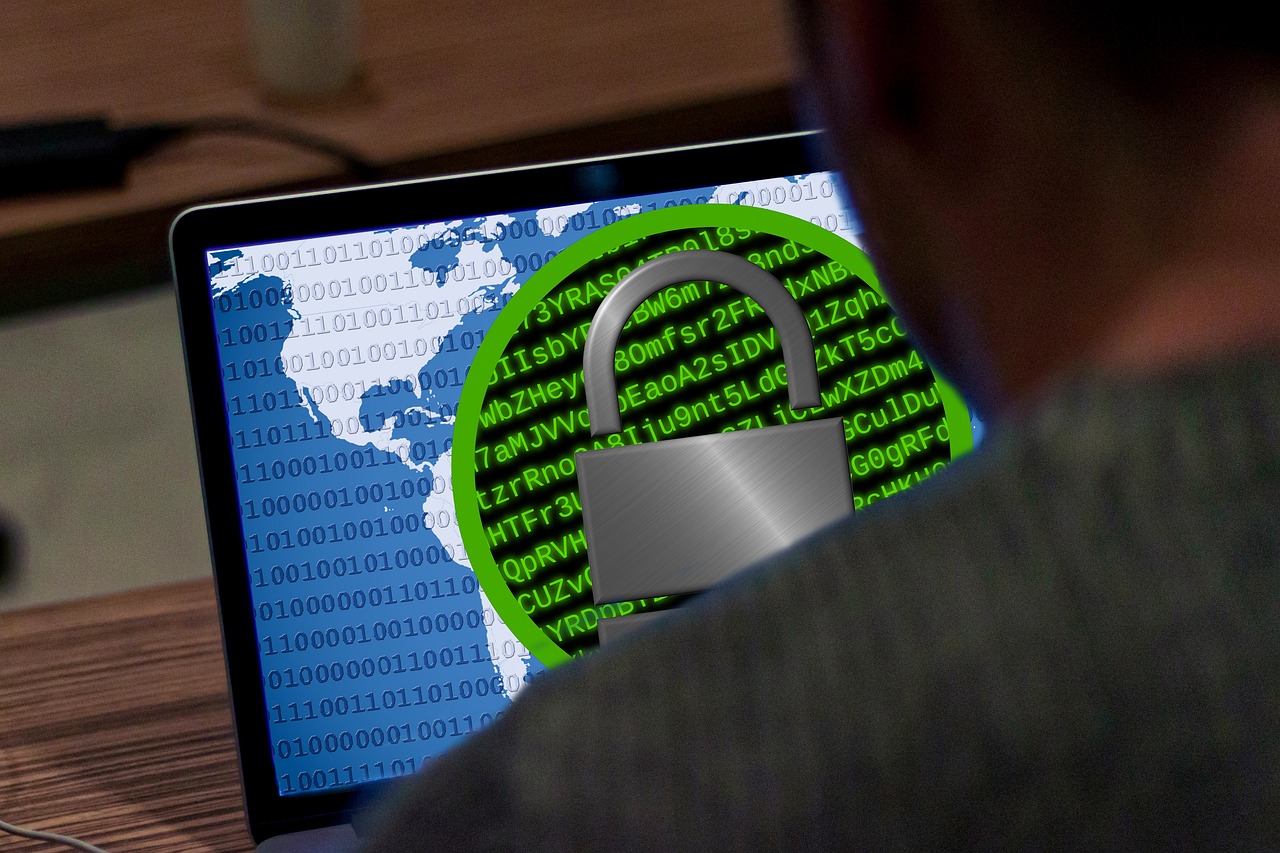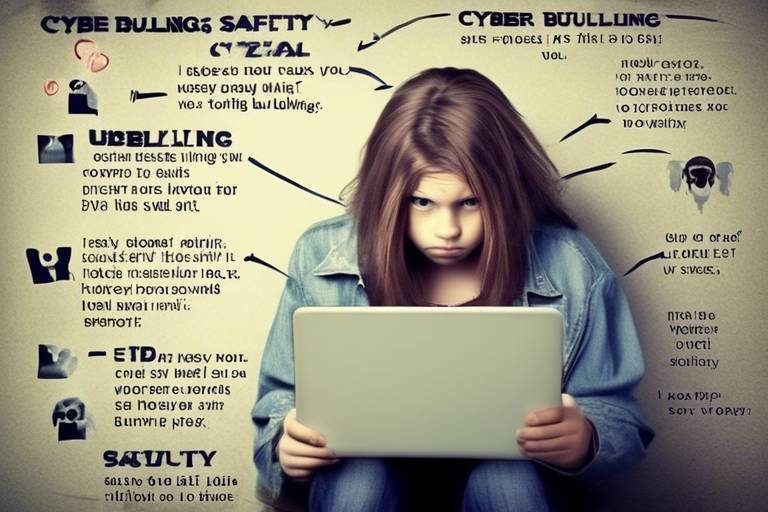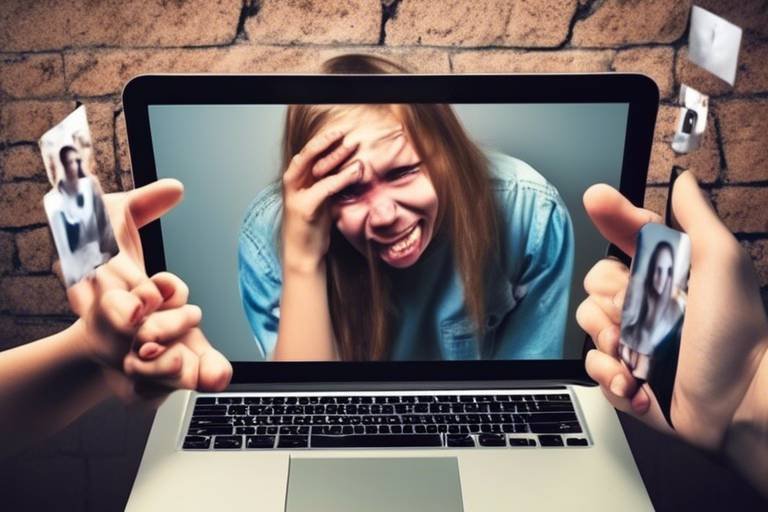Cyber Bullying and Social Safety Tips
In today's digital age, the internet has become a double-edged sword. While it offers endless opportunities for connection and creativity, it also opens the door to serious issues like cyber bullying. This article explores the critical issue of cyber bullying, its impact on individuals, and practical safety tips for navigating online spaces securely and respectfully. Cyber bullying is not just a buzzword; it’s a reality that affects countless individuals, often leaving lasting scars. Understanding this phenomenon is crucial not only for those who experience it but also for those who witness it. So, how do we tackle this pressing issue in our increasingly connected world?
Cyber bullying involves the use of digital platforms to harass or intimidate individuals. This can occur through social media, text messages, online gaming, or any other digital communication channel. It’s essential to recognize that cyber bullying can take many forms, including spreading rumors, sharing embarrassing photos, or sending threatening messages. The anonymity the internet provides can sometimes embolden bullies, making their actions even more harmful. Understanding its forms and effects is essential for prevention and intervention. So, what can we do to combat this growing trend?
Identifying the signs of cyber bullying can help victims and bystanders take action. Awareness of behavioral changes is crucial in addressing this issue effectively. Victims may exhibit a range of emotional and psychological responses, often leading to feelings of isolation and despair. If you notice someone withdrawing from social interactions or showing sudden changes in mood, it may be a sign that they are facing some form of online harassment. By recognizing these signs, we can create a supportive environment that encourages open dialogue about the challenges of online interactions.
The emotional toll on victims of cyber bullying is profound and often devastating. Victims frequently experience feelings of sadness, anger, and confusion, which can spiral into more serious mental health issues. This section discusses the psychological effects and long-term consequences of such harassment. The impact is not just limited to the moment of bullying; it can linger for years, affecting self-esteem and overall well-being. Understanding these emotional challenges is vital for providing the right support.
Many victims face increased risks of depression and anxiety, which can affect their daily lives. These mental health challenges can lead to academic struggles, social withdrawal, and even physical health issues. A victim's world can quickly become a dark place, where the joy of everyday activities is overshadowed by the fear of online interactions. Recognizing these risks is the first step in offering help and understanding to those who are suffering.
Cyber bullying can lead to social withdrawal, as victims may isolate themselves to avoid further harassment. This behavior can create a vicious cycle, where the victim feels increasingly alone and helpless. Recognizing this behavior is important for providing assistance. Friends and family can play a pivotal role in reaching out and offering support, reminding victims that they are not alone in this battle.
Bystanders play a crucial role in either perpetuating or stopping cyber bullying. This section explores how they can intervene and support victims effectively. Instead of remaining silent, bystanders can take action by reporting the behavior or offering support to the victim. Imagine a crowd watching a fight; the person who steps in can change the outcome. Similarly, in the digital world, bystanders have the power to make a significant difference.
Preventing cyber bullying requires collective efforts from individuals, schools, and communities. This section outlines effective strategies to combat this issue proactively. Education is key; teaching children about the implications of their online actions can foster a more respectful digital environment. Additionally, promoting empathy and kindness online can significantly reduce instances of cyber bullying. It’s essential to create a culture where everyone feels safe and respected.
Education about the risks and consequences of cyber bullying is essential for young people. This section emphasizes the importance of awareness and open discussions. Schools can implement programs that encourage students to talk about their online experiences, helping them understand the impact of their words and actions. When children and teens are equipped with knowledge, they become powerful allies in the fight against cyber bullying.
Fostering a supportive and respectful online environment can significantly reduce instances of cyber bullying. This section discusses methods for promoting kindness and empathy online. Encouraging positive interactions and teaching conflict resolution skills can help create a safer space for everyone. Remember, a little kindness goes a long way in the digital world!
Knowing how to report cyber bullying and where to find resources is crucial for victims. This section provides guidance on available support systems and legal options. Many platforms have built-in reporting features, and local organizations can offer support and guidance. It’s important for victims to know they are not alone and that help is available.
Q: What should I do if I see someone being bullied online?
A: If you witness cyber bullying, it's essential to take action. You can report the behavior to the platform, support the victim, and encourage them to seek help.
Q: How can I protect myself from cyber bullying?
A: Use privacy settings on social media, think before you post, and surround yourself with supportive friends who can help if you encounter bullying.
Q: What resources are available for victims of cyber bullying?
A: Many organizations provide support for victims, including hotlines, counseling services, and online resources to help navigate these challenges.

Understanding Cyber Bullying
This article explores the critical issue of cyber bullying, its impact on individuals, and practical safety tips for navigating online spaces securely and respectfully.
Cyber bullying is a pervasive issue that has emerged with the rise of digital communication. It involves the use of electronic means—like social media, messaging apps, and online forums—to harass, intimidate, or belittle individuals. Unlike traditional bullying, which often occurs in person, cyber bullying can happen anytime and anywhere, making it particularly insidious. Imagine being haunted by negative messages or taunts that you can’t escape, even in the comfort of your own home. This constant connectivity can amplify feelings of vulnerability and isolation for the victims.
There are various forms that cyber bullying can take. The most common include:
- Harassment: Repeatedly sending offensive, rude, and insulting messages.
- Impersonation: Pretending to be someone else online to spread lies or damage their reputation.
- Doxxing: Publishing private information about someone without their consent.
- Exclusion: Deliberately excluding someone from online groups or activities.
The effects of cyber bullying can be devastating and long-lasting. Victims often experience a range of emotional and psychological issues, including feelings of worthlessness, anxiety, and depression. The anonymity that the internet provides can embolden bullies, leading to more aggressive behavior than might occur in face-to-face interactions. Understanding these dynamics is crucial for anyone looking to combat this issue effectively.
Moreover, the impact of cyber bullying extends beyond the individual. It can create a toxic online environment that affects communities and even entire schools. When bullying is rampant, it can foster a culture of fear and distrust, making it difficult for individuals to engage openly and authentically. This is why it is essential for parents, educators, and peers to recognize the signs of cyber bullying and act promptly to address it.
In conclusion, understanding cyber bullying is the first step towards prevention and intervention. By recognizing its forms and effects, we can create a more supportive and respectful online community. Let's work together to ensure that digital spaces are safe for everyone.

Recognizing the Signs
Recognizing the signs of cyber bullying is crucial for both victims and those who wish to support them. It’s not always easy to spot, as the digital world can often mask the real emotional turmoil someone is experiencing. However, there are key indicators that can help you identify if someone is being targeted. For instance, if you notice a friend or loved one suddenly becoming withdrawn or anxious when using their devices, it could be a red flag. Their behavior might shift dramatically, leading you to wonder what’s causing this change.
Another sign to watch for is a change in their online activity. Are they spending less time on social media or suddenly avoiding certain apps? This withdrawal can be a protective mechanism against further harassment. It’s important to approach this situation with empathy and understanding, as victims often feel trapped and unsure of how to seek help. In many cases, they might not even realize they are being bullied until it becomes overwhelming.
Moreover, victims might exhibit emotional responses that are not typical for them. This can include:
- Frequent mood swings: They may go from being cheerful to irritable or sad without clear reasons.
- Changes in academic performance: A decline in grades or lack of interest in schoolwork can signal distress.
- Physical symptoms: Complaints of headaches, stomachaches, or other unexplained physical issues can also occur.
It's also essential to consider the role of bystanders in these situations. Often, friends or peers might witness bullying without intervening, either out of fear or uncertainty about how to help. If you find yourself in this position, remember that your support can make a significant difference. Encouraging open conversations about online experiences can foster a culture of awareness and empathy, making it easier for victims to share their struggles.
In summary, recognizing the signs of cyber bullying involves being vigilant about changes in behavior, emotional responses, and social interactions. By staying informed and proactive, we can create safer online spaces for everyone. Remember, it’s not just about spotting the signs; it’s about taking action to support those in need.
Q: What should I do if I suspect someone is being cyber bullied?
A: If you suspect someone is being cyber bullied, approach them with care and let them know you’re there to listen. Encourage them to talk about their experiences and help them find the resources they need.
Q: How can I support a friend who is a victim of cyber bullying?
A: Supporting a friend involves being a good listener, validating their feelings, and encouraging them to seek help from trusted adults or professionals. Remind them that they are not alone.
Q: Are there legal actions that can be taken against cyber bullies?
A: Yes, many jurisdictions have laws against cyber bullying. Victims can report incidents to authorities or seek legal advice to understand their options.

Emotional Impact on Victims
This article explores the critical issue of cyber bullying, its impact on individuals, and practical safety tips for navigating online spaces securely and respectfully.
Cyber bullying involves the use of digital platforms to harass or intimidate individuals. Understanding its forms and effects is essential for prevention and intervention.
Identifying the signs of cyber bullying can help victims and bystanders take action. Awareness of behavioral changes is crucial in addressing this issue effectively.
The emotional impact of cyber bullying on victims can be profound and devastating. Imagine waking up each day with a knot in your stomach, dreading the moment you log onto your social media accounts. Victims often find themselves trapped in a cycle of fear and anxiety, which can lead to a host of psychological challenges. The constant barrage of negative messages, threats, or humiliating posts can create an overwhelming sense of hopelessness. Victims may feel isolated, as if they are the only ones experiencing this torment, which can exacerbate their emotional turmoil.
Many victims experience heightened levels of depression and anxiety. These mental health issues can manifest in various ways, affecting their ability to concentrate at school or work, enjoy activities they once loved, or even maintain relationships with friends and family. The feeling of being under constant scrutiny can lead to a pervasive sense of paranoia, making them question the intentions of others around them.
Moreover, the impact of cyber bullying is not just temporary; it can have long-lasting effects. Studies indicate that victims may carry the scars of their experiences into adulthood, leading to chronic mental health issues. This can create a vicious cycle where the trauma from bullying influences their future relationships and self-esteem. For instance, a victim may struggle with trusting others, fearing that they will be hurt again. This emotional baggage can hinder personal and professional growth, making it essential to address these feelings early on.
To better understand the emotional impact, consider the following table that highlights common emotional responses among victims:
| Emotional Response | Description |
|---|---|
| Depression | A persistent feeling of sadness and loss of interest that can affect daily functioning. |
| Anxiety | Excessive worry and fear about everyday situations, often leading to panic attacks. |
| Low Self-Esteem | A diminished sense of self-worth, leading to feelings of inadequacy and self-doubt. |
| Social Withdrawal | A tendency to isolate oneself from friends and family, often to avoid further bullying. |
In addition to these emotional responses, victims may also experience physical symptoms such as headaches, stomachaches, or fatigue, which can further complicate their situation. It's crucial to recognize these signs not just as emotional reactions but as serious health issues that require attention and support.
Ultimately, the emotional impact of cyber bullying is a multifaceted issue that demands empathy and understanding. By creating a supportive environment and fostering open discussions, we can help victims feel less alone and more empowered to seek the help they need.
Many victims face increased risks of depression and anxiety, which can affect their daily lives. Understanding these mental health challenges is vital for support.
Cyber bullying can lead to social withdrawal, as victims may isolate themselves to avoid further harassment. Recognizing this behavior is important for providing assistance.
Bystanders play a crucial role in either perpetuating or stopping cyber bullying. This section explores how they can intervene and support victims effectively.
Preventing cyber bullying requires collective efforts from individuals, schools, and communities. This section outlines effective strategies to combat this issue proactively.
Education about the risks and consequences of cyber bullying is essential for young people. This section emphasizes the importance of awareness and open discussions.
Fostering a supportive and respectful online environment can significantly reduce instances of cyber bullying. This section discusses methods for promoting kindness and empathy online.
Knowing how to report cyber bullying and where to find resources is crucial for victims. This section provides guidance on available support systems and legal options.
- What is cyber bullying? Cyber bullying is the use of digital platforms to harass, threaten, or humiliate individuals.
- What are the signs of cyber bullying? Signs include sudden changes in behavior, social withdrawal, and emotional distress.
- How can I help someone who is being bullied online? Offer support, encourage them to talk about their experiences, and help them report the bullying.
- What resources are available for victims? Many organizations provide support, including hotlines, counseling services, and online resources.

Depression and Anxiety
Cyber bullying is not just a fleeting issue; it's a storm that can leave lasting damage on its victims. Many individuals who experience cyber bullying find themselves grappling with depression and anxiety. These emotional struggles can feel like a heavy weight pressing down on their spirits, making everyday life seem like an uphill battle. Imagine waking up each day feeling as though you're trapped in a dark cloud, where every interaction is tinged with fear and uncertainty. That's the reality for many who suffer from the emotional fallout of online harassment.
The psychological effects of cyber bullying can be profound. Victims may experience a range of symptoms that can disrupt their daily lives and overall well-being. These symptoms can include:
- Persistent Sadness: A feeling of hopelessness that can linger for weeks or even months.
- Increased Anxiety: Constant worry about social situations and interactions, leading to panic attacks or avoidance behaviors.
- Low Self-Esteem: A diminished sense of self-worth, often exacerbated by negative comments and messages received online.
It's essential to recognize that these mental health challenges are not merely temporary feelings; they can have long-term consequences. Victims of cyber bullying may find themselves withdrawing from social interactions, fearing further ridicule or harassment. This social withdrawal can create a vicious cycle, where isolation exacerbates feelings of depression and anxiety, making it even harder for individuals to seek help.
Furthermore, the stigma surrounding mental health can prevent victims from speaking out. Many feel ashamed or embarrassed about their experiences, believing that they should just "tough it out." However, it's crucial to break this silence. Encouraging open conversations about mental health can empower victims to seek the support they need. Support can come in various forms, such as therapy, peer support groups, or even just a listening ear from a friend or family member.
In summary, the toll of cyber bullying on mental health is significant, with depression and anxiety being two of the most common outcomes. It's vital for friends, family, and educators to be aware of these issues and to foster an environment where victims feel safe to express their feelings and seek help. Remember, no one should have to face these challenges alone.
- What should I do if I or someone I know is being cyber bullied? It's important to report the behavior to the platform being used, talk to a trusted adult, and seek support from mental health professionals.
- How can I support a friend who is a victim of cyber bullying? Be there for them, listen without judgment, and encourage them to seek help. Let them know they are not alone.
- Are there resources available for victims of cyber bullying? Yes, many organizations offer support, such as hotlines and online resources, to help victims navigate their situation.

Social Withdrawal
This article explores the critical issue of cyber bullying, its impact on individuals, and practical safety tips for navigating online spaces securely and respectfully.
Cyber bullying involves the use of digital platforms to harass or intimidate individuals. Understanding its forms and effects is essential for prevention and intervention.
Identifying the signs of cyber bullying can help victims and bystanders take action. Awareness of behavioral changes is crucial in addressing this issue effectively.
Victims of cyber bullying often experience significant emotional distress. This section discusses the psychological effects and long-term consequences of such harassment.
Many victims face increased risks of depression and anxiety, which can affect their daily lives. Understanding these mental health challenges is vital for support.
Social withdrawal is a common response among victims of cyber bullying. Imagine being in a crowded room but feeling utterly alone; that's what social withdrawal can feel like. Victims may start to isolate themselves, avoiding friends, family, and social activities to escape the harassment. This behavior often stems from a desire to protect themselves from further emotional pain. The fear of being judged or targeted can lead them to retreat into a shell, making it difficult for them to connect with others.
It's essential to recognize that this withdrawal isn't just a phase; it can have profound implications on a victim's overall well-being. When individuals stop engaging with their peers, they miss out on vital support systems that could help them cope with their experiences. The absence of social interaction can exacerbate feelings of loneliness and despair, creating a vicious cycle that’s hard to break. In fact, studies have shown that social withdrawal can lead to:
- Increased feelings of isolation
- Heightened anxiety about social situations
- Difficulty in forming new relationships
Moreover, the impact of social withdrawal can extend beyond the individual, affecting their family and friends. Loved ones may feel helpless, unsure of how to reach out or support the victim. It’s crucial for those around the victim to be aware of these signs and to approach the situation with empathy and understanding. Encouraging open dialogues about feelings and experiences can help victims feel less alone and more supported in their journey toward recovery.
Bystanders play a crucial role in either perpetuating or stopping cyber bullying. This section explores how they can intervene and support victims effectively.
Preventing cyber bullying requires collective efforts from individuals, schools, and communities. This section outlines effective strategies to combat this issue proactively.
Education about the risks and consequences of cyber bullying is essential for young people. This section emphasizes the importance of awareness and open discussions.
Fostering a supportive and respectful online environment can significantly reduce instances of cyber bullying. This section discusses methods for promoting kindness and empathy online.
Knowing how to report cyber bullying and where to find resources is crucial for victims. This section provides guidance on available support systems and legal options.
- What is cyber bullying? Cyber bullying is the use of digital platforms to harass, threaten, or intimidate individuals.
- How can I tell if someone is being bullied online? Look for signs of social withdrawal, changes in behavior, or expressions of fear regarding online interactions.
- What should I do if I witness cyber bullying? It's important to support the victim, report the behavior to the appropriate authorities, and encourage them to seek help.
- Are there legal consequences for cyber bullying? Yes, many jurisdictions have laws against cyber bullying, and offenders can face serious legal repercussions.

Role of Bystanders
This article explores the critical issue of cyber bullying, its impact on individuals, and practical safety tips for navigating online spaces securely and respectfully.
Cyber bullying involves the use of digital platforms to harass or intimidate individuals. Understanding its forms and effects is essential for prevention and intervention.
Identifying the signs of cyber bullying can help victims and bystanders take action. Awareness of behavioral changes is crucial in addressing this issue effectively.
Victims of cyber bullying often experience significant emotional distress. This section discusses the psychological effects and long-term consequences of such harassment.
Many victims face increased risks of depression and anxiety, which can affect their daily lives. Understanding these mental health challenges is vital for support.
Cyber bullying can lead to social withdrawal, as victims may isolate themselves to avoid further harassment. Recognizing this behavior is important for providing assistance.
Bystanders play a crucial role in either perpetuating or stopping cyber bullying. Their actions can significantly influence the dynamics of a bullying situation. When bystanders witness cyber bullying, they have the power to intervene and support the victim, which can make a world of difference. But what does it really mean to be a bystander in the digital age? Are they merely passive observers, or can they be active participants in creating a safer online environment?
One of the most important things for bystanders to understand is that their silence can sometimes be interpreted as complicity. When they choose not to act, they may unintentionally encourage the behavior to continue. Conversely, when bystanders stand up against bullying, they send a strong message that such actions are unacceptable. Here are a few ways bystanders can make a positive impact:
- Speak Up: If you see someone being bullied online, don’t hesitate to speak out. A simple comment can show the victim that they are not alone.
- Report the Behavior: Most social media platforms have mechanisms to report bullying. Utilize these tools to alert the platform about the abusive behavior.
- Support the Victim: Reach out to the victim privately. Let them know you are there for them and encourage them to seek help.
It’s also essential for bystanders to educate themselves about the implications of cyber bullying. Understanding the emotional toll it can take on victims can motivate bystanders to act. They can also encourage others to join in the fight against cyber bullying, creating a ripple effect of support and awareness. Imagine a community where everyone feels empowered to stand against negativity and promote kindness—this is the goal!
In summary, the role of bystanders is pivotal in the fight against cyber bullying. They have the unique opportunity to influence the situation positively and help create a culture of respect and empathy online. By taking action, they not only help the victim but also contribute to a safer digital environment for everyone.
Preventing cyber bullying requires collective efforts from individuals, schools, and communities. This section outlines effective strategies to combat this issue proactively.
Education about the risks and consequences of cyber bullying is essential for young people. This section emphasizes the importance of awareness and open discussions.
Fostering a supportive and respectful online environment can significantly reduce instances of cyber bullying. This section discusses methods for promoting kindness and empathy online.
Knowing how to report cyber bullying and where to find resources is crucial for victims. This section provides guidance on available support systems and legal options.
Q: What should I do if I witness cyber bullying?
A: If you witness cyber bullying, consider speaking up, reporting the behavior to the platform, and offering support to the victim.
Q: How can I protect myself from becoming a victim of cyber bullying?
A: Use privacy settings on social media, be cautious about sharing personal information, and consider who you interact with online.
Q: Are there legal consequences for cyber bullying?
A: Yes, many jurisdictions have laws against cyber bullying, and offenders can face legal repercussions.

Prevention Strategies
This article explores the critical issue of cyber bullying, its impact on individuals, and practical safety tips for navigating online spaces securely and respectfully.
Cyber bullying involves the use of digital platforms to harass or intimidate individuals. Understanding its forms and effects is essential for prevention and intervention.
Identifying the signs of cyber bullying can help victims and bystanders take action. Awareness of behavioral changes is crucial in addressing this issue effectively.
Victims of cyber bullying often experience significant emotional distress. This section discusses the psychological effects and long-term consequences of such harassment.
Many victims face increased risks of depression and anxiety, which can affect their daily lives. Understanding these mental health challenges is vital for support.
Cyber bullying can lead to social withdrawal, as victims may isolate themselves to avoid further harassment. Recognizing this behavior is important for providing assistance.
Bystanders play a crucial role in either perpetuating or stopping cyber bullying. This section explores how they can intervene and support victims effectively.
Preventing cyber bullying requires collective efforts from individuals, schools, and communities. By working together, we can create a safer online environment for everyone. One of the most effective strategies is education. Teaching children and teens about the risks associated with online interactions can empower them to make better choices. For instance, schools can implement programs that focus on digital citizenship, which emphasizes respectful communication and the impact of their words online.
Another crucial strategy is fostering a supportive environment. This means encouraging open discussions about online experiences and creating safe spaces where individuals can express their feelings without fear of judgment. Parents and educators should actively engage with young people, asking about their online interactions and experiences. This not only builds trust but also helps identify any potential issues before they escalate.
Moreover, promoting kindness and empathy online can significantly reduce instances of cyber bullying. Simple actions, like sharing positive messages or standing up for someone being targeted, can create a ripple effect. Schools can organize campaigns that celebrate kindness, encouraging students to share uplifting stories and support one another. By highlighting the importance of compassion, we can shift the culture from one of hostility to one of support.
Lastly, it's essential to establish clear reporting mechanisms. Victims should know who to turn to when they face harassment online. Schools and communities can create easily accessible resources for reporting incidents, ensuring that victims feel supported and heard. This could involve anonymous reporting systems or designated staff members trained to handle such cases. By empowering individuals to speak up, we can take significant steps towards eradicating cyber bullying.
Knowing how to report cyber bullying and where to find resources is crucial for victims. This section provides guidance on available support systems and legal options.
- What is cyber bullying? Cyber bullying is the use of digital platforms to harass, threaten, or intimidate individuals.
- How can I tell if someone is being cyber bullied? Signs include sudden changes in behavior, withdrawal from social activities, and emotional distress.
- What should I do if I witness cyber bullying? It's important to support the victim, report the incident, and encourage them to seek help.
- Are there legal consequences for cyber bullying? Yes, many jurisdictions have laws against cyber bullying, and perpetrators can face legal action.

Educating Children and Teens
In today's digital age, where social media and online interactions are a significant part of everyday life, about cyber bullying is more crucial than ever. It's not just about teaching them to avoid bad behavior; it's about fostering an understanding of the impact their words and actions can have on others. Imagine a world where every child is equipped with the knowledge to navigate online spaces safely and respectfully—this is the vision we should strive for.
First and foremost, it’s essential to have open conversations with young people about the nature of cyber bullying. Many kids may not even recognize that their actions online can hurt others. By discussing real-life scenarios and sharing stories, we can bring the issue closer to home. Awareness is the first step in prevention. Encourage children to think critically about the content they share and to consider how it might affect someone else.
One effective approach to education is to incorporate cyber bullying discussions into school curriculums. Schools can organize workshops or seminars that focus on digital citizenship, where students learn about responsible online behavior. These sessions can cover various topics, such as:
- Understanding what constitutes cyber bullying
- Recognizing the signs of being bullied or being a bully
- Learning how to report incidents appropriately
- Developing empathy and support for victims
Moreover, parents play a pivotal role in reinforcing these lessons at home. By maintaining an open dialogue, parents can encourage their children to share their online experiences without fear of judgment. This trust can lead to early detection of potential issues and foster a supportive environment where kids feel safe discussing their feelings. It's vital for parents to stay informed about the platforms their children use and to educate them about privacy settings and safe online practices.
Another effective strategy is to use interactive tools like games or apps that teach kids about the consequences of cyber bullying. These tools can simulate real-life scenarios, allowing children to see the effects of their actions in a safe environment. For example, role-playing exercises can help them understand the perspective of both the victim and the perpetrator, fostering empathy and understanding.
Lastly, we must remember that education should not be a one-time event. It should be an ongoing conversation that evolves as technology and social dynamics change. Regular check-ins with children about their online experiences can help reinforce the lessons learned and ensure they feel supported as they navigate their digital lives. By working together—parents, educators, and communities—we can build a generation that values respect and kindness, both online and offline.
Q: What is cyber bullying?
A: Cyber bullying involves using digital platforms to harass, threaten, or intimidate someone. It can happen through social media, texting, or online gaming.
Q: How can I tell if my child is being bullied online?
A: Look for signs such as changes in behavior, withdrawal from social activities, or reluctance to use their devices. Open communication is key to understanding their experiences.
Q: What should I do if I discover my child is a cyber bully?
A: Address the behavior directly and discuss the impact it has on others. It’s important to guide them towards understanding empathy and making amends.
Q: Are there resources available for victims of cyber bullying?
A: Yes, many organizations provide support for victims. Websites like StopBullying.gov and the Cyberbullying Research Center offer valuable resources and advice.

Creating a Supportive Environment
This article explores the critical issue of cyber bullying, its impact on individuals, and practical safety tips for navigating online spaces securely and respectfully.
Cyber bullying involves the use of digital platforms to harass or intimidate individuals. Understanding its forms and effects is essential for prevention and intervention.
Identifying the signs of cyber bullying can help victims and bystanders take action. Awareness of behavioral changes is crucial in addressing this issue effectively.
Victims of cyber bullying often experience significant emotional distress. This section discusses the psychological effects and long-term consequences of such harassment.
Many victims face increased risks of depression and anxiety, which can affect their daily lives. Understanding these mental health challenges is vital for support.
Cyber bullying can lead to social withdrawal, as victims may isolate themselves to avoid further harassment. Recognizing this behavior is important for providing assistance.
Bystanders play a crucial role in either perpetuating or stopping cyber bullying. This section explores how they can intervene and support victims effectively.
Preventing cyber bullying requires collective efforts from individuals, schools, and communities. This section outlines effective strategies to combat this issue proactively.
Education about the risks and consequences of cyber bullying is essential for young people. This section emphasizes the importance of awareness and open discussions.
Creating a supportive environment online is not just a nice-to-have; it's a necessity. When we foster kindness and empathy, we lay the groundwork for a safer digital landscape. Just think about it: if every person online treated others with respect, how much less hostility would we encounter? Here are some effective ways to cultivate such an environment:
- Encouraging Open Communication: Parents and educators should promote open discussions about online behavior. When children feel comfortable sharing their online experiences, they are more likely to report bullying.
- Modeling Positive Behavior: Adults should lead by example. Demonstrating respectful communication and conflict resolution can inspire younger generations to follow suit.
- Establishing Clear Guidelines: Setting rules for online interactions within families and schools can help define acceptable behavior. This clarity can prevent misunderstandings and promote a culture of respect.
Moreover, it’s crucial to celebrate positive interactions. Recognizing and rewarding acts of kindness can motivate others to behave similarly. For instance, schools could implement programs that highlight students who demonstrate exceptional empathy online.
Finally, we must remember that creating a supportive environment is an ongoing process. It requires constant effort and vigilance. By nurturing a culture of respect and understanding, we can significantly reduce the instances of cyber bullying and create a brighter, more inclusive online community.
Knowing how to report cyber bullying and where to find resources is crucial for victims. This section provides guidance on available support systems and legal options.
Q: What should I do if I witness cyber bullying?
A: If you witness cyber bullying, it's important to report it to the appropriate authorities, whether it's a school official or a social media platform. Additionally, offer support to the victim and encourage them to speak up.
Q: How can parents help their children deal with cyber bullying?
A: Parents can help by fostering open communication, educating their children about online safety, and encouraging them to report any incidents of bullying they encounter.
Q: Are there legal actions that can be taken against cyber bullying?
A: Yes, many jurisdictions have laws against cyber bullying. Victims can report incidents to law enforcement, and in some cases, they may be able to pursue civil action against the perpetrator.

Reporting and Resources
Knowing how to report cyber bullying and where to find resources is crucial for victims. The digital landscape can feel overwhelming, especially when faced with harassment. However, there are steps that can be taken to regain control and seek help. First and foremost, it's essential to document everything. Keeping records of the bullying incidents—such as screenshots, messages, and dates—can provide valuable evidence when reporting to authorities or platforms.
Many social media platforms and online services have specific guidelines for reporting abusive behavior. For example, Facebook, Twitter, and Instagram all offer options to report bullying directly through their apps. When reporting, be sure to provide as much detail as possible. This includes the nature of the bullying, the usernames involved, and any evidence you’ve gathered. Remember, you are not alone in this; many platforms take these reports seriously and will investigate the matter.
In addition to reporting on social media, it's also important to reach out to trusted adults or professionals. Schools often have counselors or designated staff members who can assist students facing cyber bullying. Engaging with these resources can help victims feel supported and understood. Furthermore, there are numerous organizations dedicated to combating cyber bullying, offering hotlines and online support.
Here’s a quick overview of some valuable resources:
| Organization | Resource Type | Website/Contact |
|---|---|---|
| StopBullying.gov | Information and resources | stopbullying.gov |
| Cyberbullying Research Center | Research and support | cyberbullying.org |
| National Suicide Prevention Lifeline | Crisis support | 1-800-273-TALK (8255) |
| Childhelp | Hotline for children | 1-800-422-4453 |
Additionally, legal options may be available depending on the severity of the bullying. Some jurisdictions have laws specifically addressing cyber bullying, allowing victims to pursue legal action against their harassers. Consulting with a legal professional can provide clarity on these options and help victims understand their rights.
Ultimately, the key to combating cyber bullying lies in awareness and action. Whether you are a victim, a bystander, or a concerned parent, knowing how to report and where to seek help can make a significant difference. Remember, it’s okay to ask for help, and taking that step is a sign of strength.
- What should I do if I see someone being bullied online? If you witness cyber bullying, consider reporting it to the platform and offering support to the victim. Your intervention can make a huge difference.
- Can I report cyber bullying anonymously? Yes, many platforms allow for anonymous reporting. However, providing your contact information can help them follow up on the situation.
- What if the bullying continues after I report it? If the bullying persists, consider reaching out to law enforcement or seeking legal advice, especially if you feel threatened.
Frequently Asked Questions
- What is cyber bullying?
Cyber bullying is the use of digital platforms, like social media, text messages, or online games, to harass, intimidate, or harm someone. It's like being bullied at school, but it happens behind a screen, making it even more insidious.
- How can I recognize if someone is being cyber bullied?
Look for signs such as sudden changes in behavior, withdrawal from social activities, or a drop in academic performance. If someone seems unusually upset after using their device, it might be a red flag that they are experiencing cyber bullying.
- What emotional effects can cyber bullying have on victims?
Victims often suffer from anxiety, depression, and low self-esteem. The emotional toll can lead to serious mental health issues, making it crucial to address and support those affected.
- How can bystanders help stop cyber bullying?
Bystanders can play a pivotal role by speaking up. They can report the bullying to adults, support the victim, or even confront the bully in a safe manner. Remember, silence can be perceived as complicity!
- What are some effective prevention strategies against cyber bullying?
Education is key! Teaching children about the consequences of their online actions, promoting kindness, and fostering open discussions can create a safer online environment. Encouraging empathy and respect is essential.
- What should I do if I witness cyber bullying?
If you see cyber bullying happening, don’t just scroll past! Report it to the platform, reach out to the victim to show your support, and inform a trusted adult. Taking action can make a big difference.
- Where can victims find help and resources?
Victims can seek help from school counselors, hotlines dedicated to bullying prevention, or local mental health services. It's important to know that support is available and that no one has to face this alone.
- Are there legal options for victims of cyber bullying?
Yes, there are legal avenues available. Victims can report cyber bullying to law enforcement, especially if it involves threats or harassment. Familiarizing oneself with local laws can provide additional support.



















